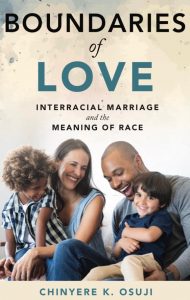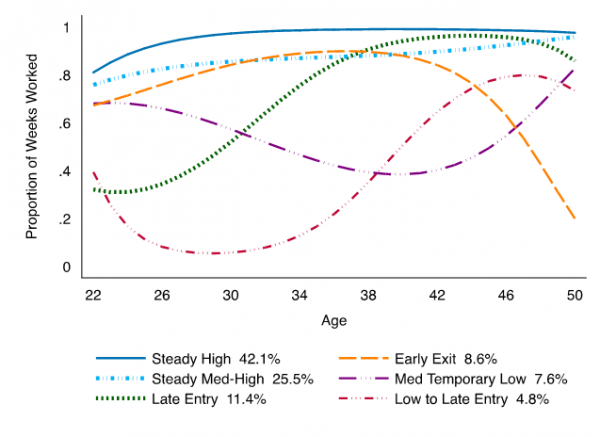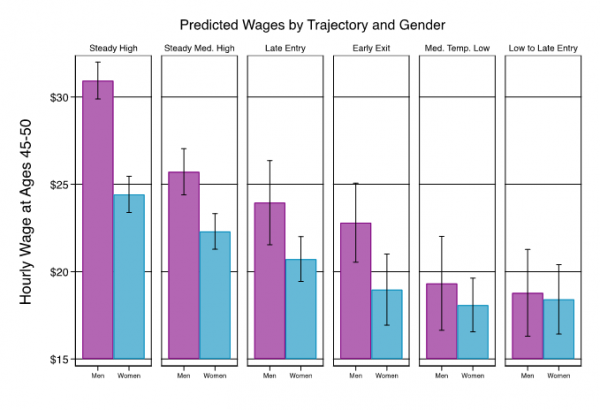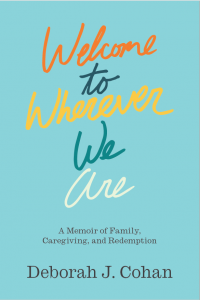
A briefing paper prepared for the Council on Contemporary Families’ Symposium Parents Can’t Go It Alone—They Never Have.
Two-thirds of mothers today work outside the home in wealthy Western countries. Despite this similarity, mothers’ experiences managing their work and family commitments vary a lot from country to country. It’s easier to be a working mother in some nations than others. Why? One main reason is that countries offer very different public policies to support families.
National governments offer different kinds and levels of policy supports because societies have diverse beliefs about who should work for pay and provide care to others. Such policies give us a glimpse into national culture: Policies are powerful symbols about what a nation thinks women and men are capable of, good at, and deserve. These policies matter. My research shows how.
I conducted interviews with 135 middle-class working mothers in Sweden, Germany, Italy, and the United States for my new book, Making Motherhood Work: How Women Manage Careers and Caregiving. I wanted to understand what working mothers themselves say helps and hinders their work–family balance. It was immediately clear that moms in the United States were more stressed, guilty, overwhelmed, and fatigued than the mothers I spoke to in Europe. In the United States, managing family and paid work is seen as a personal struggle. In Sweden, Germany, and Italy, citizens think of childrearing and work–family reconciliation as matters of public concern. In these European countries, public policies help ensure that people have the time and resources needed to care for their loved ones. These policies vary in their effectiveness, but they exist. In the United States, adults are encouraged to find solely private solutions for childrearing and housework.
The United States has no national work–family policy to support caregiving. We are the only wealthy nation on the planet with no paid parental leave. No universal health care. No universal social insurance entitlement. No guaranteed income. No universal child care. And no minimum standard for vacation and sick days.
To be clear, mothers didn’t say it was a breeze to work and raise kids in Europe. But it was far easier because of the various work–family policies available to women and their families in Sweden, Germany, and Italy. Let’s take a close look at what these policies are exactly. This can help give a sense for what could be possible here in the United States.
Parental Leave (Job-protected Paid Leave Available to Both Parents)
After the addition of a new child to the family, parents’ jobs are protected in the three European countries, and they are entitled to paid leave. The length of leave and wage replacement rate varies. In Sweden, couples have an entitlement to 16 months (480 days) paid at 80 percent of previous wages, up to a ceiling. This time is meant to be divided between parents, and it can be used flexibly until children are 8 years old. Each parent has an exclusive right to 3 of the 16 months. This “use it or lose it” model is meant to incentivize both parents to take time off. It means that unless fathers take at least 3 months off, the family is entitled to only 13 months. In Germany, couples can take up to 12 months of paid parental leave total, paid at roughly two-thirds of their net earnings, also up to a ceiling. If moms and dads share parental leave, they get 2 bonus months, for a maximum of 14 months. As in Sweden, parents can take leave flexibly anytime until the child is 8 years old. In Italy, parents are each entitled to 6 months of parental leave at 30 percent pay. Parental leave is an individual, nontransferable entitlement, and families can take 10 months total. Again, parents can use these days flexibly at their discretion until their child is 8. If the dad takes at least 3 months’ leave, the family gets an additional month for a total of 11 months. Of course, that means in Sweden and Germany, more families can afford to spend more time with newborns, whereas in Italy, only those who can afford to live on 30 percent pay can use the time allotted them. Although Italy may not be as generous as the other European countries I studied, it is far better than what we have here in the United States, which is no paid leave. The Family and Medical Leave Act (FMLA) gives eligible employees up to 12 weeks unpaid, job-protected leave to care for a new child or an ill family member, or to recover from an illness. Even that protection applies only to businesses with more than 50 employees, and workers must have worked for at least 12 months and a minimum of 1,250 hours to qualify.
Maternity Leave (Job-protected Paid Leave for Mothers Surrounding Childbirth)
In Sweden, mothers have the exclusive right to 3 of the 16 months’ parental leave at 80 percent pay. Employed women in Germany may take maternity leave for up to 6 weeks before childbirth and are required to stay home for 8 weeks afterward, receiving full pay. Mothers in Italy are required to take 5 months of maternity leave at 80 percent pay. Although requiring women to remain home may seem paternal, it is surely more appreciated by families than no statutory entitlement at all, which is what we have in the United states: no right to paid maternity leave after the birth of a baby.
Paternity Leave (Job-protected Paid Leave for Fathers During or Following Childbirth)
Fathers in Sweden have the exclusive right to 3 of the 16 months parental leave at 80 percent pay. In Germany fathers have no entitlement to paternity leave for men. If both parents take at least 2 months parental leave, they earn 2 extra months paid leave, for a total of 14 months. In Italy, as of 2018, fathers have 4 days mandatory paternity leave at 100 percent pay. They are required to take these days within the first 5 months of birth while mothers are also on leave. Before 2013, there was no designated paternity leave whatsoever. Five days may not seem like much, but that’s 5 more days than fathers have a right to in the United States.
Paid Vacation and Holidays
In Sweden all workers have 25 days per year paid vacation days. Many receive more as a result of union agreements. If a person falls ill while on vacation, those days aren’t counted against the vacation allowance. Swedes get 11 paid holidays per year. In Germany, workers have a right to 20 days per year minimum. As a result of collective agreements, most receive 30 days. Those working less than full time get proportionally fewer days. Depending on the state, Germans enjoy between 9 and 13 paid holidays a year. In Italy workers are entitled to 20 days per year minimum. As in Sweden and Germany, because of collective bargaining agreements, most receive at least 25 days. Italians have 10 paid holidays annually. Once again, the U.S has no minimum federal standard. The U.S. government designates 10 federal holidays per year, but paid holidays are at employers’ discretion.
In Sweden, if you have been employed for at least 1 month, an employee gets roughly 80 percent of income for the first 14 days of illness. After that the employer contacts the state, which works with the person’s doctor to determine eligibility for extended sickness benefits. Unemployed or self-employed people get a sickness benefit from the government. And parents may stay home with a sick child for up to 120 days a year until children reach 12 years (paid at 80 percent of wages, up to a limit). For seriously ill children, there is no limit to the number of days parents can take off work. Workers in Germany may take as many personal sick days as needed over the course of a year at full wages. All employees get 10 days per year to tend to a sick child, at 70 percent pay. In Italy, parents can take unlimited unpaid days off work to care for ill children under 3 years, and 5 days unpaid annually for kids ages 3 to 8 years. For seriously ill family members, workers can take 2 years at full pay (with a cap) total. Here, too, the United States is the outlier, with no minimum federal standard. Eligible workers may use FMLA for their own serious illness, or to take care of a seriously ill family member, for up to 12 weeks, without pay.
Child Care
Sweden provides universal child care for children ages 1 to 12 years. The cost for parents is income-related up to a low ceiling, and it’s free for low-income families. The maximum rate for even the wealthiest families is about US$160 per month. In Germany, universal care is available for children ages 3 to 6 years. As of August 2013, all children older than 1 year are legally entitled to a child care space (although these are still difficult to come by in some places). A recent nationwide study found that in Germany day care costs families on average US$192 per month. In Italy, child care is universally available for children ages 3 years and over, but is difficult to attain for children below 3 years. A recent survey found that child care costs families US$343 monthly, on average. The United States has no state or federal child care systems. The limited federal child care provisions are means-tested for only the poorest families. The average cost of private child care is US$799 per month ($9,589 a year)—more than the average cost of many in-state college tuition levels.
What Do U.S. Policies Imply about American Values?
Given all this, what message do you think the U.S. government sends to residents with these policies—or should I say, the lack of policies? You are on your own. You are owed nothing. Yet, regardless of marital or parental status, wealth, race, region, or religion, every single person needs care throughout their lives. No one is an island. Society would collapse without care. Other countries came to this realization a long time ago. The United States lags way behind: It is exceptional for its lack of policy support for caregiving and families. That’s not a title we should be proud of.
The United States was founded on the belief that citizens have inalienable rights to life, liberty, and the pursuit of happiness, and that government is meant to protect these rights. If we truly believe this nation should be at the forefront of human rights—a country where residents can truly lead free and happy lives alongside those they care for and care about—then the path ahead is obvious. We don’t need to start from scratch in envisioning better policy supports. The benefits already available in other countries are models from which to choose.
We need to pass robust, egalitarian work–family policies at a federal level. I suggest we start with paid family leave and affordable, high-quality child care and health care for all. We can do far more and far better for U.S. families. Our future depends on it.
Caitlyn Collins, Assistant Professor of Sociology, Washington University in St. Louis, c.collins@wustl.edu, is the author of Making Motherhood Work: How Women Manage Careers and Caregiving (Princeton University Press, 2019). Portions of this report appeared in Working Mother.









